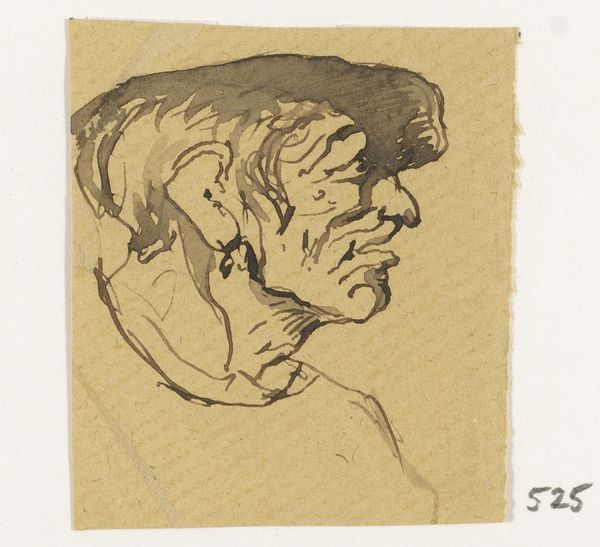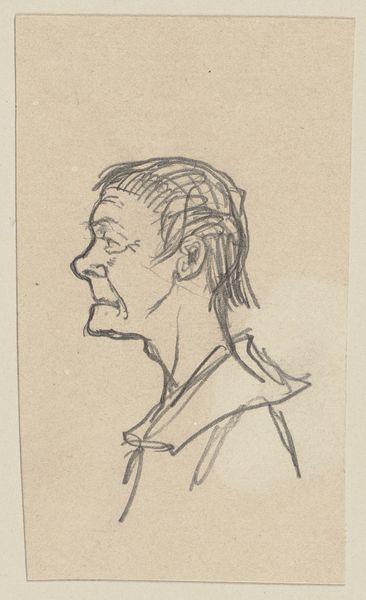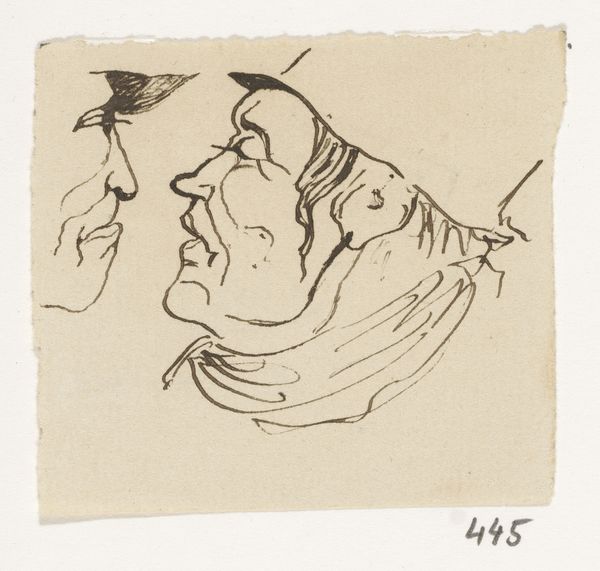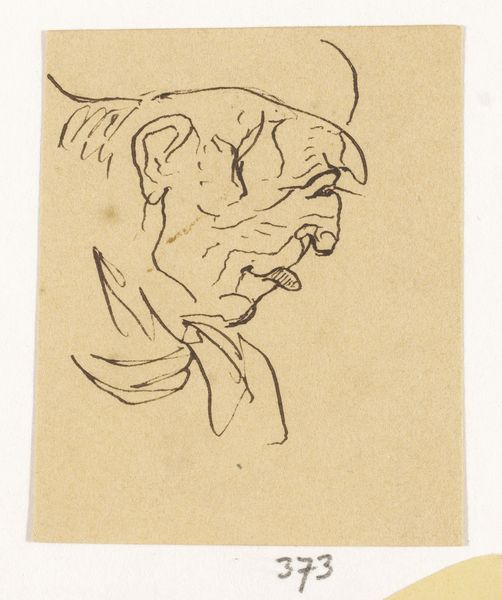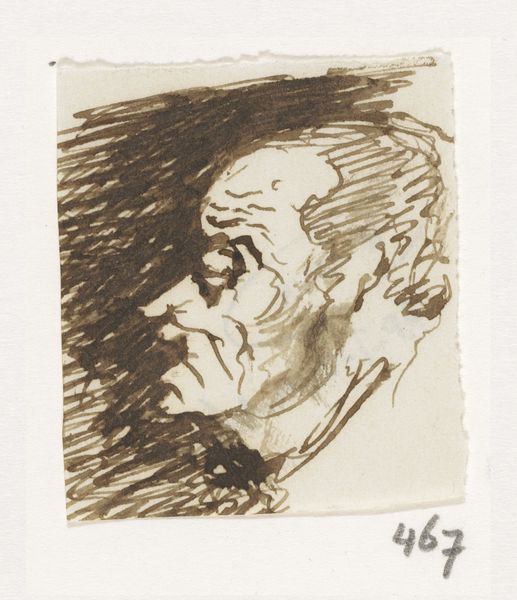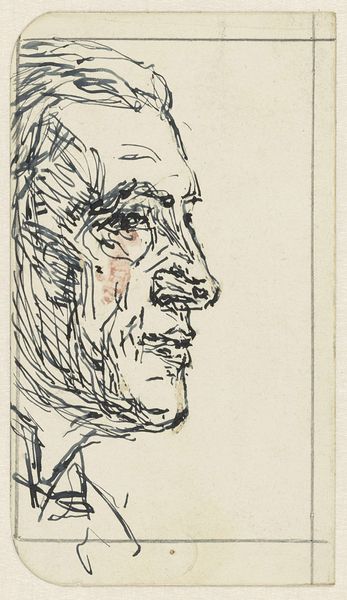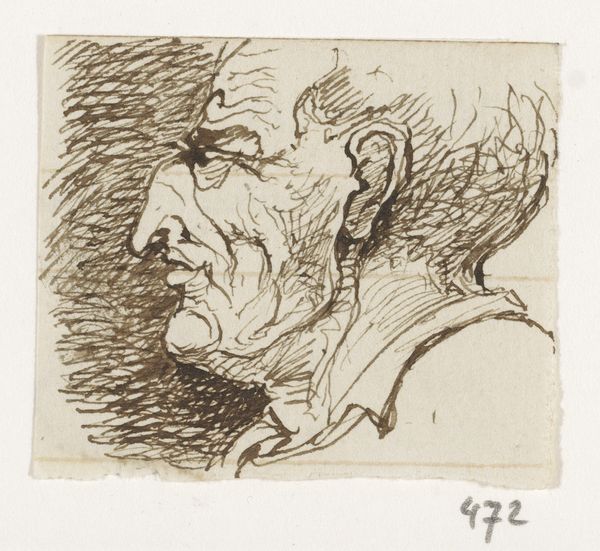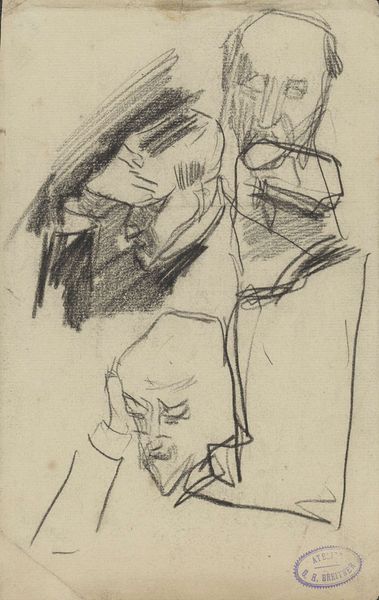
Dimensions: height 63 mm, width 72 mm
Copyright: Rijks Museum: Open Domain
Editor: This is "Koppen," a drawing in ink on paper by Johannes Tavenraat, created sometime between 1840 and 1880. The quick, almost frantic lines give it a sense of immediacy. What do you see when you look at this piece? Curator: I see a fascinating example of 19th-century drawing practices. The labor involved in creating these drawings was intimately tied to the availability and cost of materials like paper and ink. This looks like a study, perhaps for a larger work, but it stands alone as a testament to the artist's skill. The rapid, economical lines suggest efficiency in production, typical in workshops of the period. Editor: Efficiency? So you're saying even in art, the practical considerations of material cost influenced the style? Curator: Absolutely. Consider the social context. Who was Tavenraat creating this for? Was it commissioned, or a personal exploration? The choice of materials and the speed of execution reflect the market for such images at the time. Romanticism valued individual expression, but even that was framed by the economics of art production. Notice how he carefully economized the amount of material waste when using paper as the drawing surface; a form of artistic frugality in the selection and execution of his art. Editor: That's a really interesting perspective! I was focused on the character in the drawing, but thinking about the cost of materials really changes how I see it. I’ll look more closely at how resources inform artwork now. Curator: Exactly. By examining the materials and production, we gain a deeper understanding of the artist's process and the historical conditions that shaped their work. I'm glad you gained valuable insights.
Comments
No comments
Be the first to comment and join the conversation on the ultimate creative platform.

